Homemade Naan
This post may contain affiliate links. Read my full disclosure policy.
Learn to make irresistibly soft and pillowy naan in your own kitchen with this simple recipe – it far outshines any store-bought version.
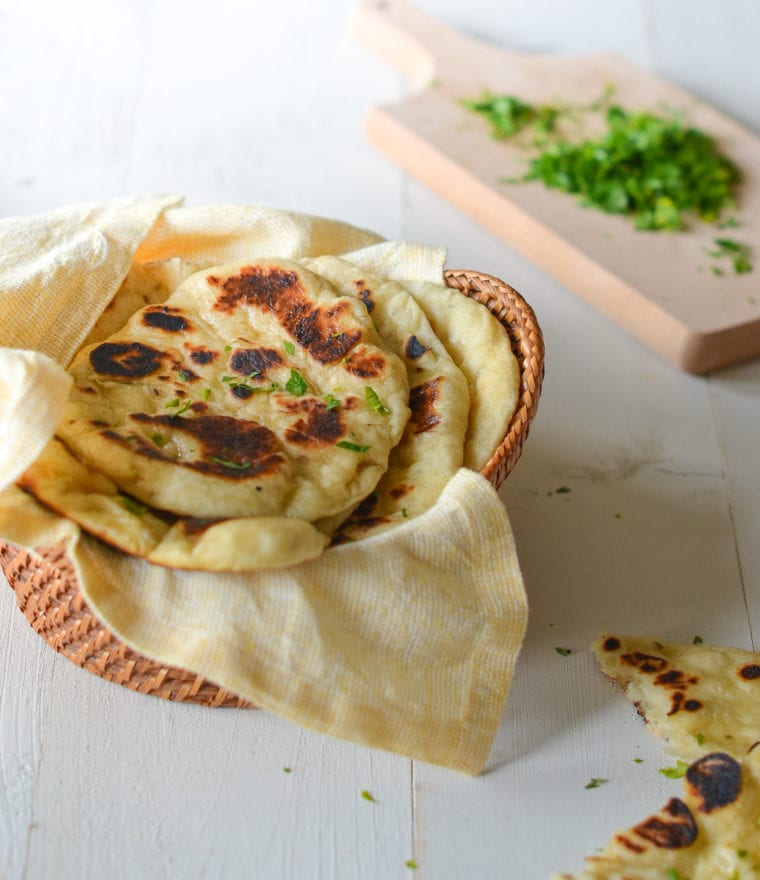
Naan is a soft, pillowy flatbread traditionally baked in a tandoor. This cylindrical clay or metal oven, prevalent in restaurant kitchens across the Indian subcontinent, the Middle East, and Central Asia, reaches scorching temperatures, imparting a distinct smoky flavor to foods. Naan dough, enriched with yogurt and olive oil and flavored with anise seeds, is rolled out and slapped against the tandoor’s inner walls, where it adheres and bakes swiftly over open flames. Once done, it’s brushed with melted butter.
In this recipe, I’ve replicated the tandoor’s high heat and charred flavor using a very hot cast iron skillet or nonstick pan. Making naan at home is so worth the effort—aside from the rising time, it’s quick to prepare, and the taste is leagues above store-bought versions! Paired with saucy dishes like chicken curry, butter chicken, or chicken tikka masala, homemade naan truly shines.
“The dough came together easily, was nice to work with and cooked up beautifully… My search for the perfect naan bread is over—this recipe is the best!”
What You’ll Need To Make Naan
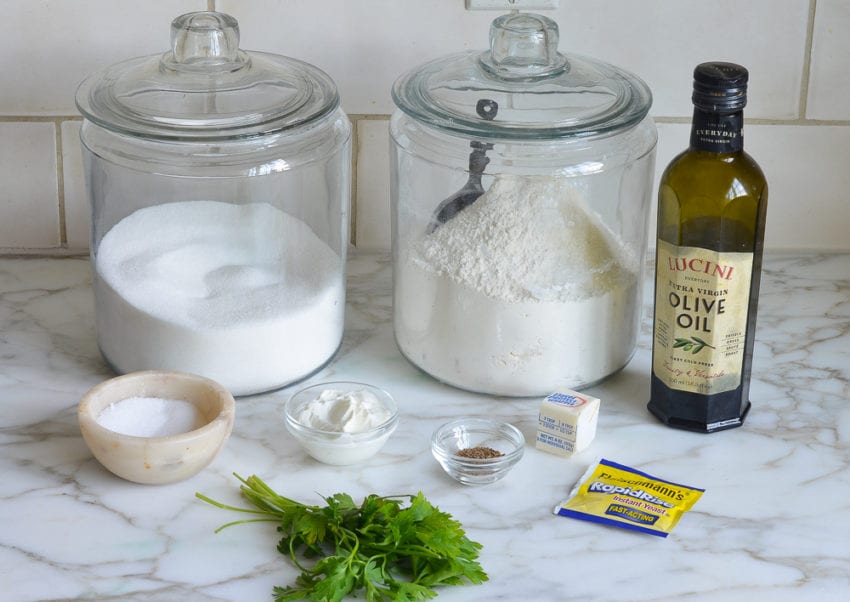
As you can see, the ingredients are very basic. The yogurt and olive oil add a bit of tang and richness. The anise seeds add just a hint of licorice flavor; feel free to leave them out, or replace them with nigella seeds (which have a subtle onion flavor), poppy seeds, or sesame seeds.
Step-by-Step Instructions
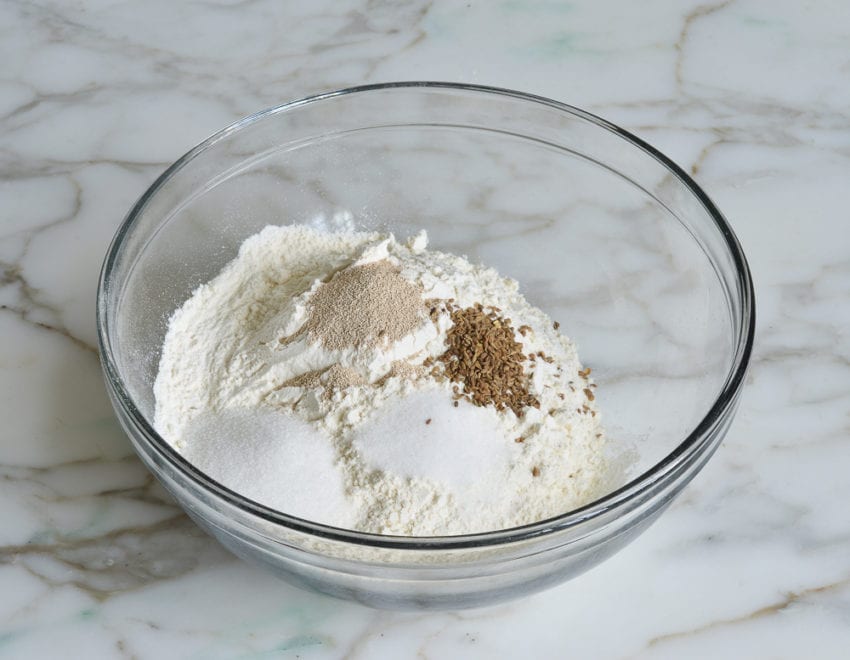
Begin by combining the flour, yeast, sugar, anise seeds and salt in a large bowl, then whisk to combine.
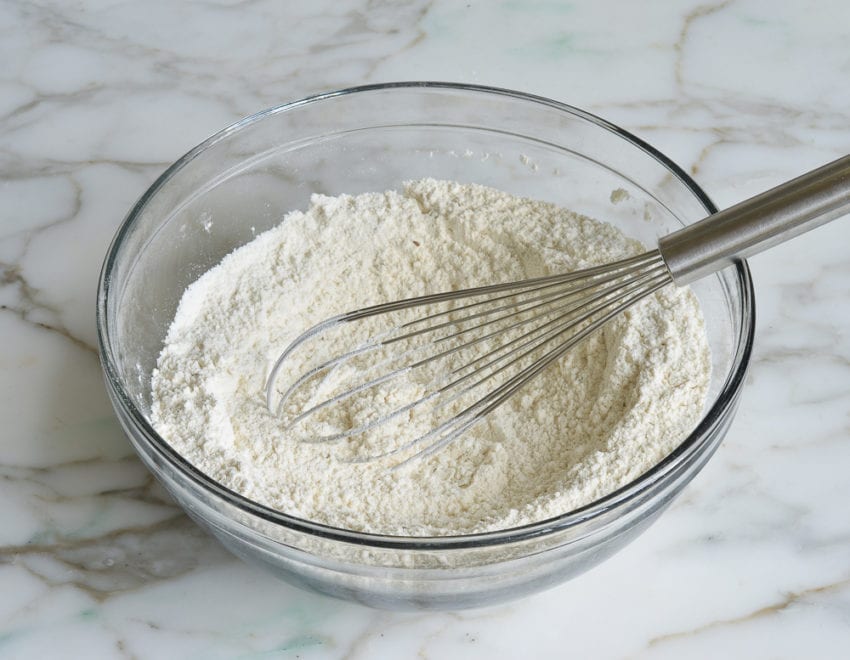
Whisk together the yogurt, olive oil, and warm water.
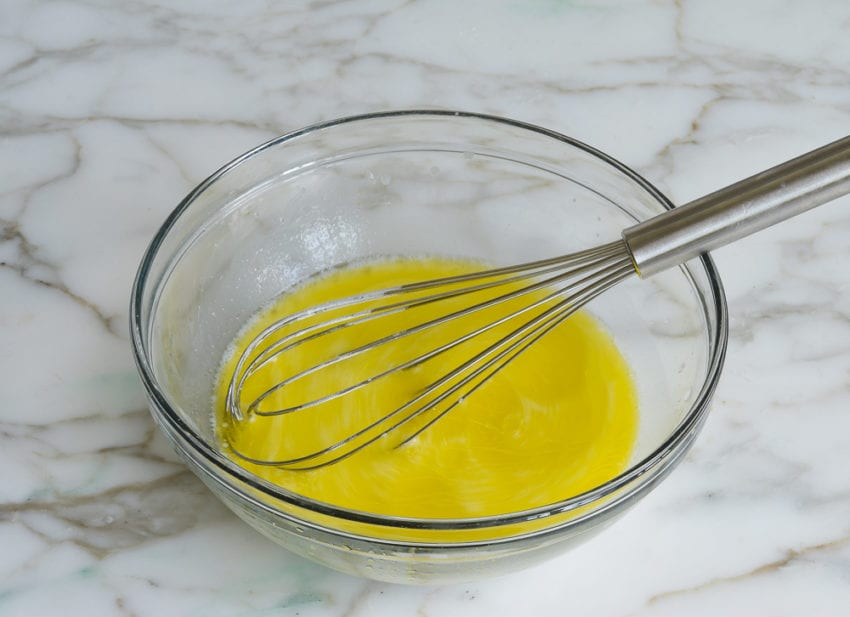
Add the liquid mixture to the dry ingredients.
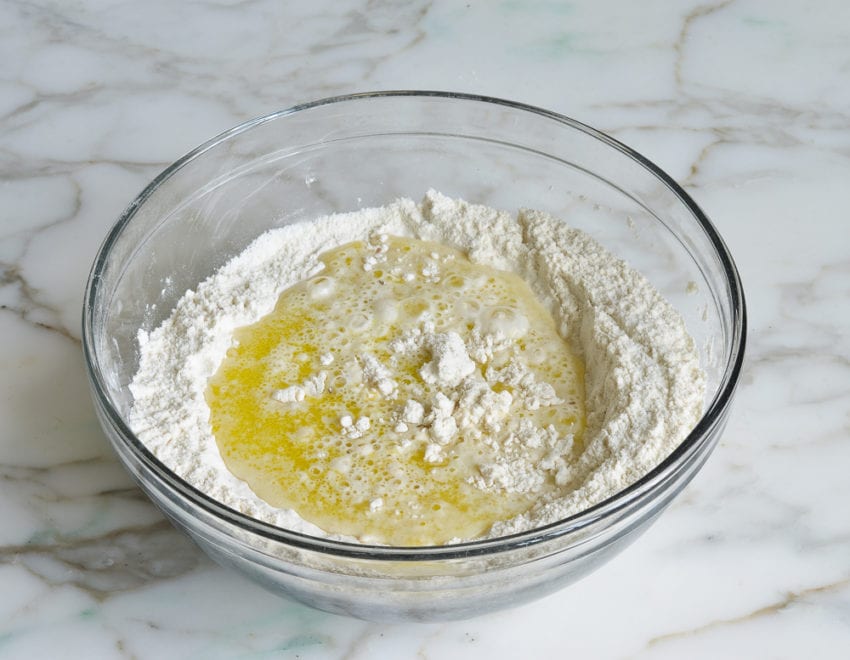
And stir with a fork until the dough comes together.
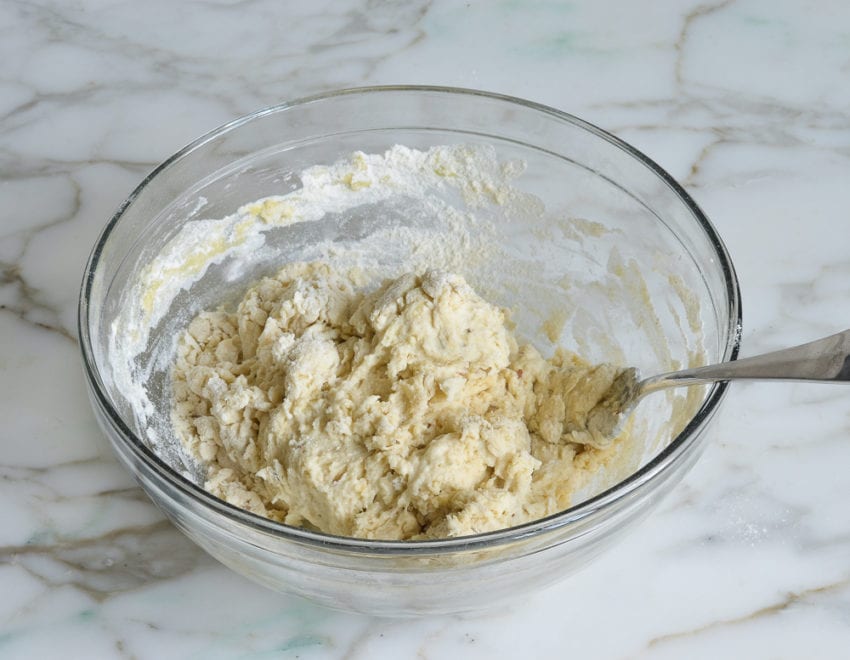
Dust your hands with flour and knead into a soft, sticky ball.
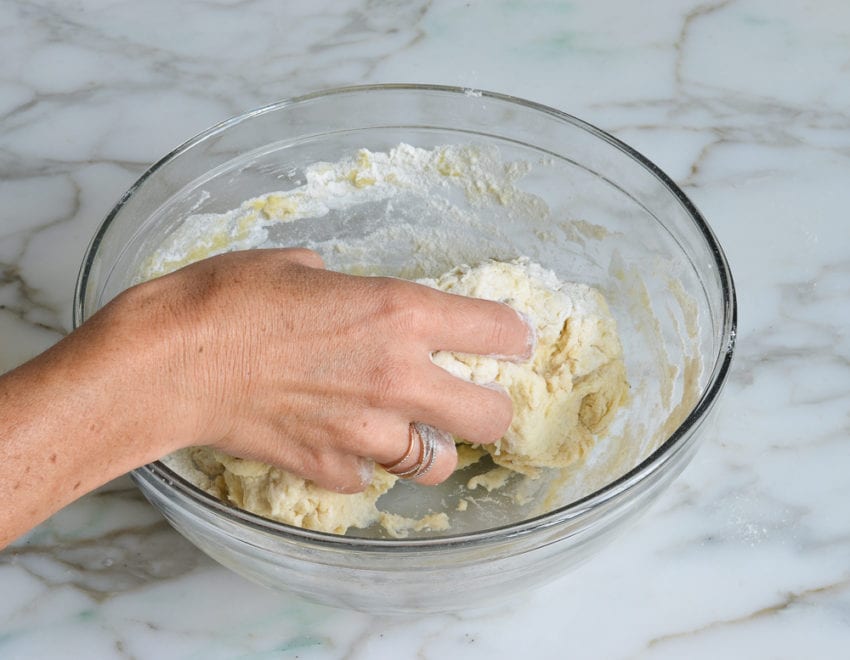
Cover with plastic wrap.
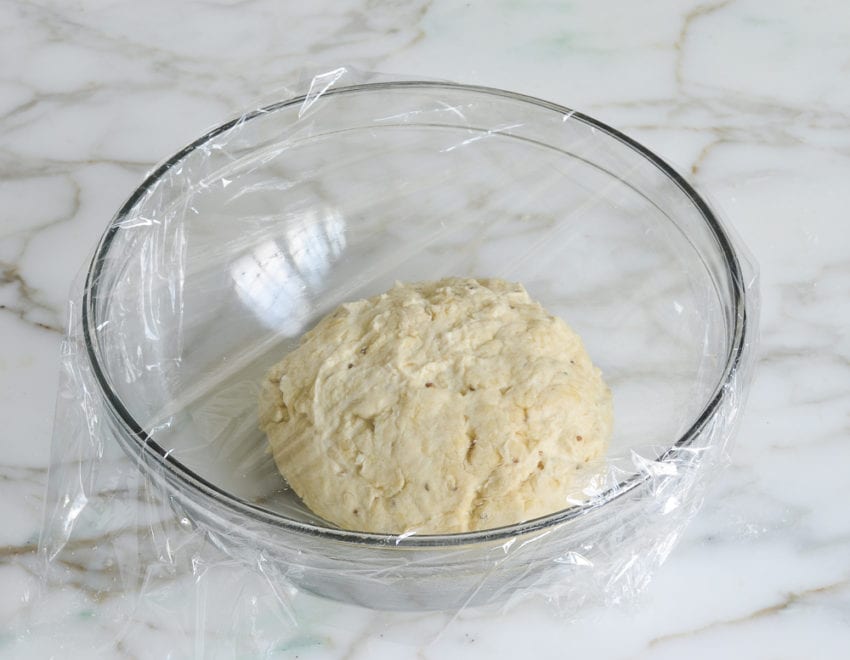
Let rise in a warm spot until about doubled in size, 1 to 1-1/2 hours. Hint: the warmer the spot, the faster it will rise.
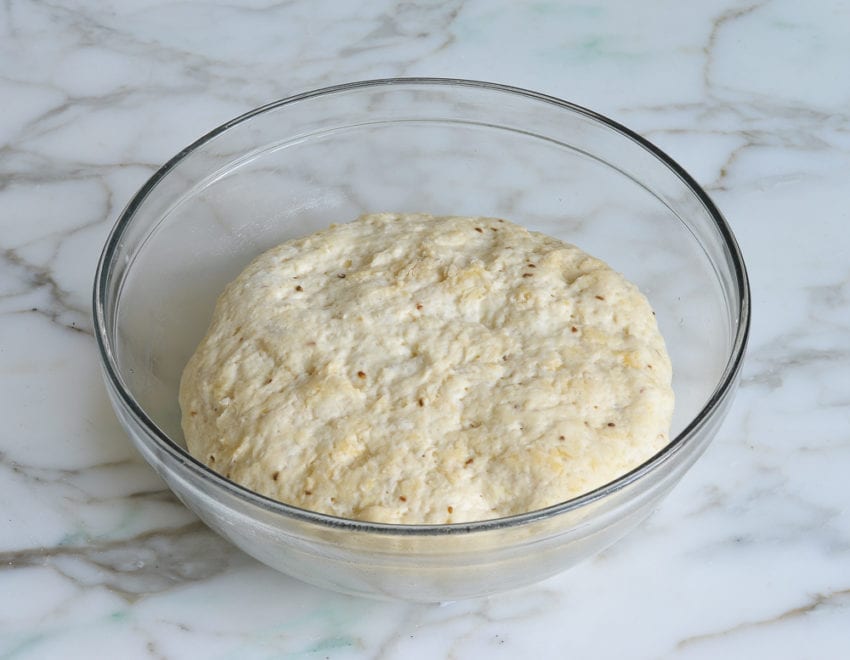
Fill a small bowl with flour. Dust some of the flour onto a work surface. Dump the dough on top and sprinkle the dough with more flour.
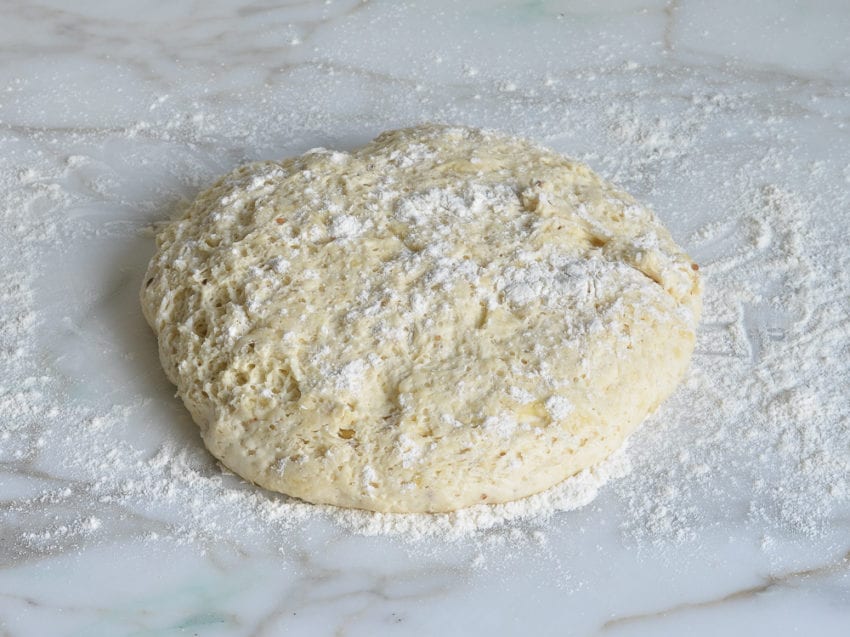
Shape the dough into a rectangle, adding more flour as necessary so it doesn’t stick.
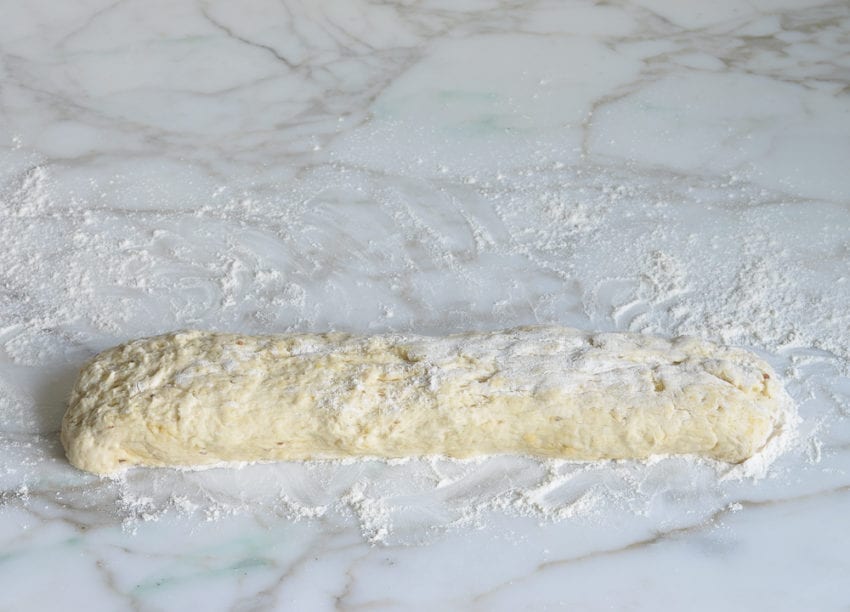
Then, divide into six equal portions.
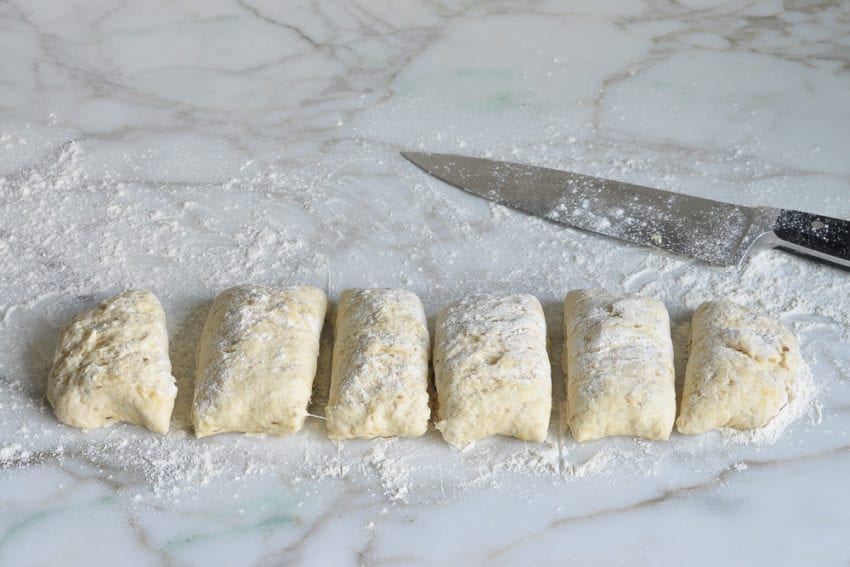
Heat a cast iron or heavy nonstick skillet over medium-high heat until very hot. While it heats, roll one of the dough balls into an oval about 1/8-inch thick.
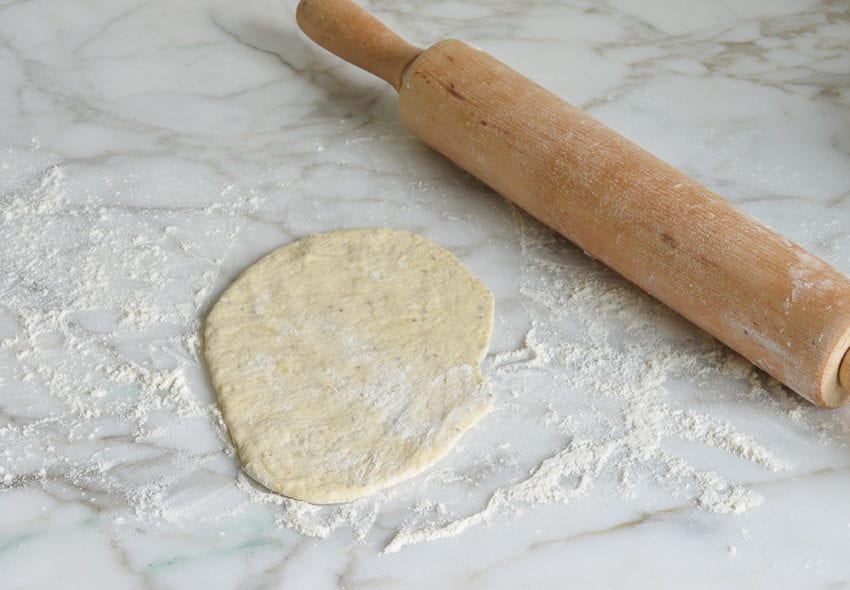
Place the dough in the hot, dry skillet and cook until the surface is full of air bubbles and the bottom is browned and blistered in spots.
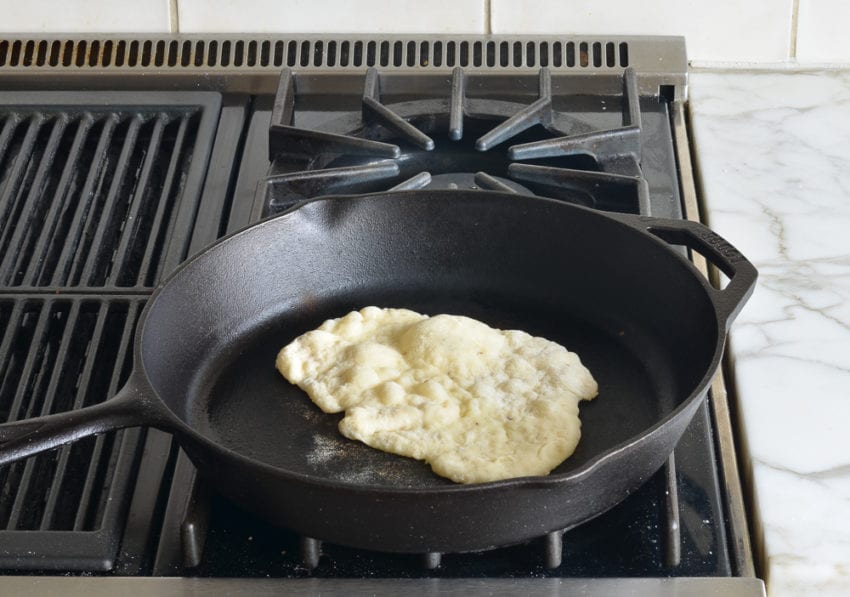
Flip the naan and cook a few minutes more.
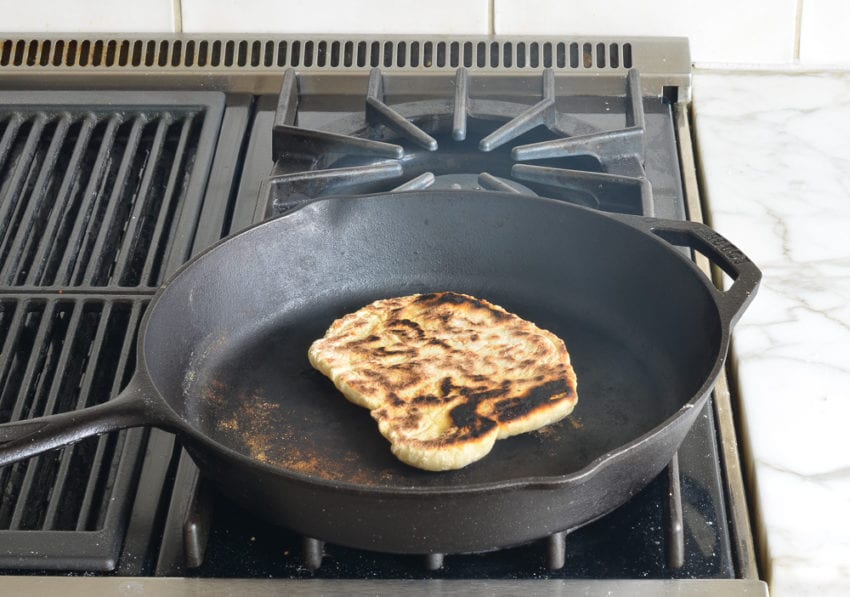
Brush the cooked naan with melted butter, and repeat with remaining dough balls.
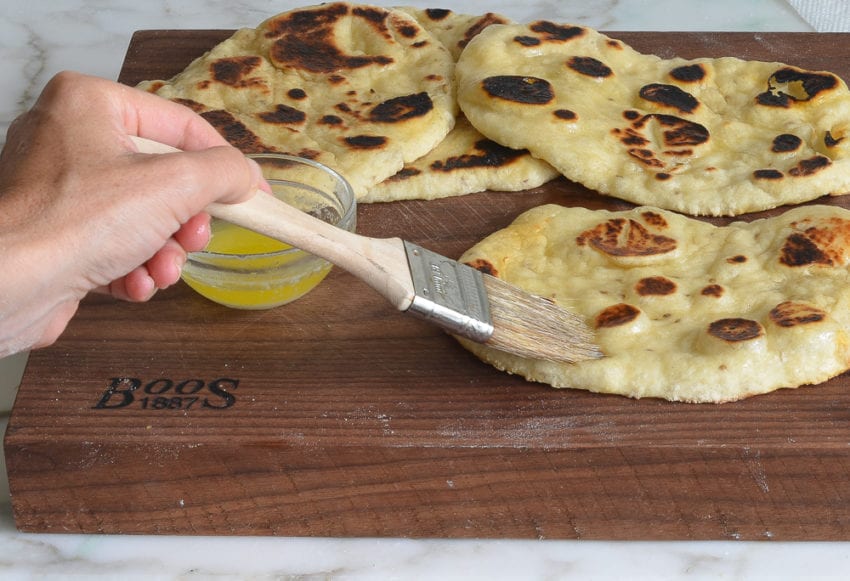
Sprinkle with parsley, if using, then serve warm.
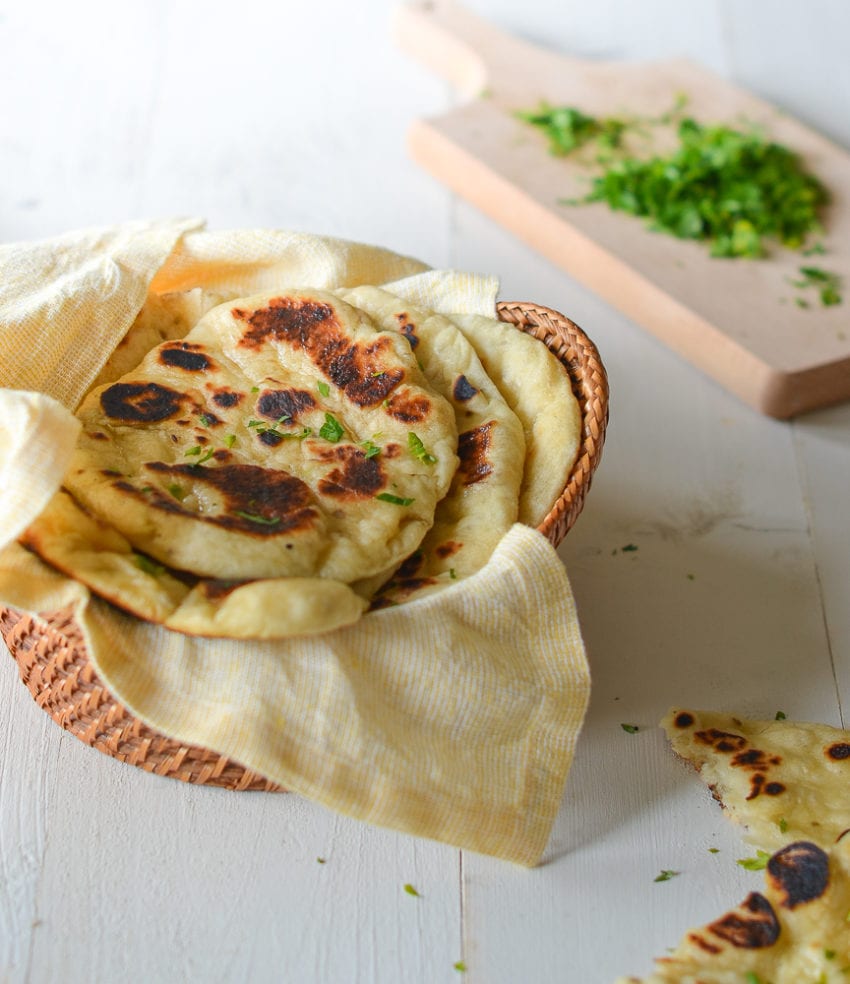
You may also like
Frequently Asked Questions
A: Depending on how far ahead you want to make the naan, you have a few options. If serving within one day, store the naan in resealable plastic bag at room temperature. For longer storage, wrap each piece of cooled naan securely in plastic wrap and put all the rounds in a sealable plastic bag, then freeze for up to 3 months. To reheat, wrap the naan in aluminum foil and warm in a 350°F oven until hot.
A: Instant yeast and active dry yeast are both types of yeast used in baking, but they have distinct differences. Active dry yeast has larger granules surrounded by a protective shell, which often requires it to be dissolved in warm water (a process known as proofing) before mixing with other ingredients. In contrast, instant yeast features finer granules without this protective layer, allowing it to dissolve and activate more rapidly. This means that instant yeast can typically be mixed directly into dry ingredients without the need for proofing.
A: Active dry yeast may be used instead of instant/rapid-rise yeast in this recipe, however, the dough will take longer to rise. To give active dry yeast a “head start” and speed things up, you can dissolve it in the lukewarm water and let it sit until frothy, about 10 minutes. After that, add it to the flour, sugar, salt, and anise seeds, and proceed with the recipe.
A: Sure! I’d add some minced garlic to some melted butter and brush it on the bread after it’s cooked.
Video Tutorial
Homemade Naan
Learn to make irresistibly soft and pillowy naan in your own kitchen with this simple recipe – it far outshines any store-bought version.
Ingredients
- 2 cups all purpose flour, spooned into measuring cup and leveled off with a knife, plus more for rolling (see note)
- 1 tablespoon sugar
- 1 teaspoon instant dry yeast/rapid-rise yeast (see note)
- 1 teaspoon salt
- Heaping ½ teaspoon anise seeds (optional)
- 3 tablespoons plain yogurt
- 2 tablespoons extra virgin olive oil
- ¾ cup warm water (about 100°F)
- 2 tablespoons melted salted butter, for brushing on finished naans
- 1 tablespoon chopped fresh Italian parsley (optional), for serving
Instructions
- In a large bowl, whisk together the flour, sugar, yeast, salt and anise seeds (if using). Set aside.
- In a medium bowl, whisk together, the yogurt, olive oil, and ¾ cup warm water (about 100°F). Add the yogurt mixture to the dry ingredients and mix with a fork. When the dough is about to come together, dust your hands with flour and knead gently into a soft, slightly sticky dough (sprinkle more flour, little by little, if the dough is too wet to work with). As soon as it comes together, stop kneading.
- Lightly oil or spray a clean bowl with nonstick cooking spray (the bowl should be large enough to allow the dough to double in size). Transfer the dough to the prepared bowl and cover with plastic wrap or a damp kitchen towel. Let sit in a warm place for 1 to 1½ hours, or until about doubled in size (hint: the warmer the spot, the faster the dough will rise).
- Fill a small bowl with about ½ cup flour. Dust a work surface with some of the flour and dump the dough on top. Sprinkle some of the flour on top of the dough and on your hands. Shape the dough into a long rectangle and cut into 6 equal portions, dusting with more flour as necessary so the dough doesn't stick. Roll each portion of dough in the bowl of flour to keep them from sticking.
- Warm a large cast iron or heavy nonstick pan over medium-high heat until very hot. Using a rolling pin, roll one of the dough balls into an oval shape about ⅛-inch thick (it should be about 9 x 4 inches). Pick up the dough and flip-flop it back and forth between your hands to release any excess flour; then gently lay the dough in the dry skillet and cook until the top is bursting with air bubbles and the bottom is golden and blackened in spots, a few minutes. Flip the naan and cook about 1-2 minutes more until the the bottom is lightly browned and blistered in spots. Remove the naan from the skillet and brush with melted butter. Place the naan in a tea towel-lined dish to keep warm. Repeat with the remaining naans, adjusting the heat lower if necessary as you go (I usually find it necessary to lower the heat to medium after the first naan). Sprinkle with parsley, if using, and serve warm.
- To keep the cooked naan warm, place them in a 200°F oven. Store leftovers in a Ziplock bag and reheat in a 350°F oven wrapped in foil.
- Note: I use King Arthur flour, which is higher in protein than some other all-purpose flours. If using a flour with a lower protein content, such as Gold Medal, you will likely need to add a few more tablespoons of flour.
- Note: Active dry yeast may be used instead of instant/rapid-rise yeast, however, the dough will take longer to rise. To give active dry yeast a boost, you can dissolve it in the lukewarm water and let it sit until frothy, about 10 minutes. After that, add it to the flour, sugar, salt, and anise seeds, and proceed with the recipe.
- Freezer-Friendly Instructions: The naan can be frozen for up to 3 months. Once it’s completely cooled, wrap each piece securely in plastic wrap and put all the rounds in a sealable plastic bag prior to putting in the freezer. To reheat, wrap the naan in aluminum foil and warm in a 350°F oven until hot.
Nutrition Information
Powered by ![]()
- Serving size: 1 naan
- Calories: 241
- Fat: 9 g
- Saturated fat: 3 g
- Carbohydrates: 35 g
- Sugar: 3 g
- Fiber: 1 g
- Protein: 5 g
- Sodium: 323 mg
- Cholesterol: 11 mg
This website is written and produced for informational purposes only. I am not a certified nutritionist and the nutritional data on this site has not been evaluated or approved by a nutritionist or the Food and Drug Administration. Nutritional information is offered as a courtesy and should not be construed as a guarantee. The data is calculated through an online nutritional calculator, Edamam.com. Although I do my best to provide accurate nutritional information, these figures should be considered estimates only. Varying factors such as product types or brands purchased, natural fluctuations in fresh produce, and the way ingredients are processed change the effective nutritional information in any given recipe. Furthermore, different online calculators provide different results depending on their own nutrition fact sources and algorithms. To obtain the most accurate nutritional information in a given recipe, you should calculate the nutritional information with the actual ingredients used in your recipe, using your preferred nutrition calculator.

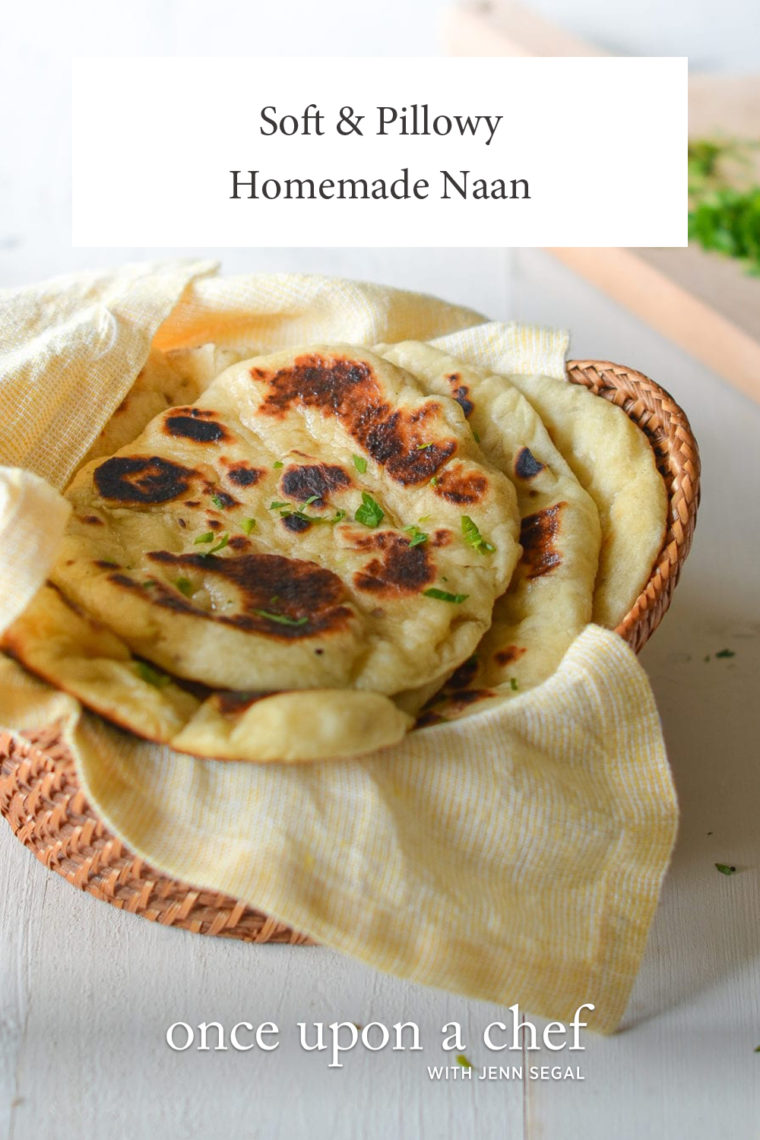

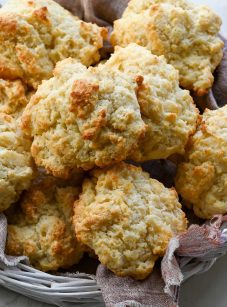
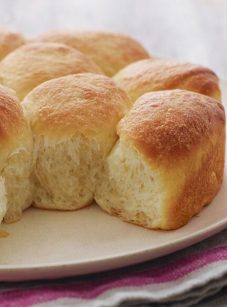
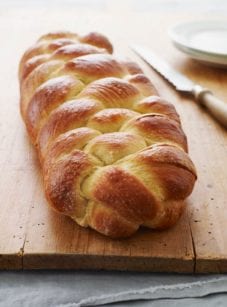
Made this last night. Super easy and delicious, also fast. Just as good if not better than from the Indian restaurant. Cooked perfectly in my new cast iron skillet. Yes the dough is sticky but just add small amounts of flour until you can work with it. I added about 4 extra tablespoons of flour ( one at a time).
Should I use less instant yeast than active-dry?? Most recipes call for less. Thanks!
Hi Stephen, You should use the same amount. Hope you enjoy!
Made my first batch last week and although it was not the perfect ratio – I LOVE IT! It tasted better than what I expected, especially since I’ve never made any bread before! I’ve been wanting to eat more bread and I’m so glad there’s this recipe since I don’t have an oven yet. Thank you Jenn!
Oh em gee! I was worried that my clumsy hands would not get this right, but the naan came out perfectly! My entire family gobbled up the whole batch! You have to be pretty patient for the dough to rise but it was worth the wait. Can I double the recipe and get the same results? Or would I have to make 2 separate batches? I can’t wait to try another recipe of yours!
Hi Karen, So glad you enjoyed it! I haven’t doubled this myself but a number of readers have done so successfully.
It didn’t work, the dough is very wet and sticky and doesn’t look like the pictures.
Hi Palmilla, Sorry you had a problem with the naan! Did you use a standard liquid measuring cup for the water and a dry ingredient measuring cup for the flour?
Same with me here, it was so wet that i have to put extra almost 1 cup in the batter to get the texture like in the photo.
tasty, making this again in the near future, thanks! if i wanted to freeze the dough, do i roll out into individual naans first, or freeze the whole ball?
Hi Lainey, Glad you liked the naan! Yes, you could get away with freezing the dough (I’d freeze it in one big ball). Here’s some helpful guidance.
I weighed the flour (instead of using a measuring cup) for my second batch and it was definitely stickier than the first time (which did look like the photo), but after it rises, as long as you roll the cut ball of dough in flour before rolling, it is workable and that’s what keeps it so nice and fluffy inside once cooked! 🙂
Same with me here, it was like glue. Put in at least 3/4 cup more flour. Used Greek yogurt so not too wet either.
This recipe was amazing! I was honestly shocked by how well the texture came out. Just like if you ordered it from a restaurant. Thank you for this!
I did find that the recipe made 6 small naans, so for a family of four, I would do 1.5 times everything.
As others have said, the liquid to solid ratio doesn’t work with the amounts specified. The dough is far too wet to work with, needed to add another 50 grams to make it more cohesive. Would also suggest author uses a numeric measurement amounts such as grams or oz, cups is such a imprecise unit of measurement. Otherwise, the results are great.
Hi Deirdre, sorry you had a problem with the texture/dry to wet ratios, but glad to hear they turned out nicely nevertheless. The recipe actually has weight measurements as well — to view them, scroll down to the recipe, and immediately under the recipe title on the right side, you’ll see a little toggle. If you move it from “cup measures” to metric, you’ll see measurements that will work for you.
Hi Jen, I too have had problems with the ratios, I wasn’t even close and tried everything by weight which is included for everything except water which is still in cups. Do you happen to know the weight in grams for the water as I can tell by the number of top rated reviews that this must be a good recipe if I can get the ratios right.
Hi Ed, Sorry you had a problem with this. You’ll need 180 ml of water. I hope you have better luck the next time around!
Ran out of yeast, but have some sourdough starter. Wondering if you have any experience and/or suggestions on how to use starter to make these naan.
I don’t have any experience with it — I’m sorry!
Your recipes are all good so it must be me. I followed instructions as written. After the first naan was flipped over the cast iron pan got
more and more burned flour in it much like in your photo only all over pan so each naan that followed had a burned all over look.
Also when i dumped dough on counter (after rising) the underside was a little hard and dry. Perhaps i had dough too close to fireplace where i put it to rise. I did not get a fluffy naan all over but some of the edges were as you would expect ,light and fluffy. Wifey loved the taste which we had with a chicken curry. Will try again. I may try a non stick pan or cast iron bbq. I can put all naan on bbq at once so no residual flour that would attach to each naan as they are cooked. I give three stars but again think it was me as so many said it worked for them. ron Vancouver BC
I’ve never made naan in my life and I was quite intimidated to make it, but your recipe was so easy to follow and they turned out delicious! I used to buy Trader Joe’s frozen naan but taking some time out of my day to make fresh naan is 10000% better. My family couldn’t get enough and wanted more. Will definitely be making this on a regular basis!
Followed this to the letter and they came out perfect…. thank you. Yes the dough was a bit wobbly but I just kept adding flour to rollout etc and they were the best nan ever. Leftovers in plastic in the fridge to use in the next couple of days